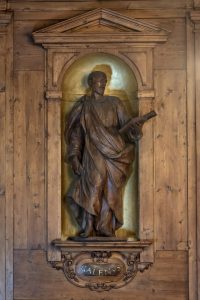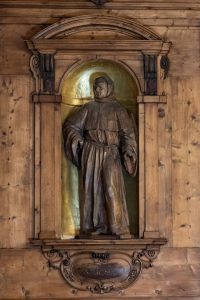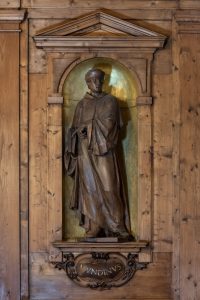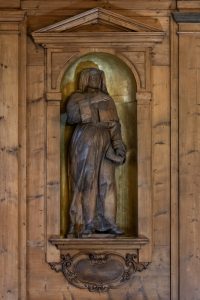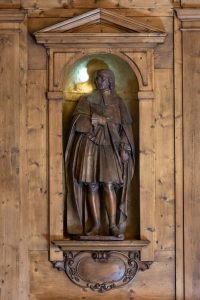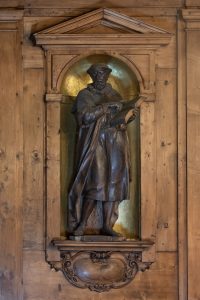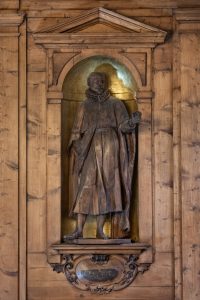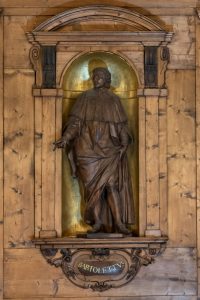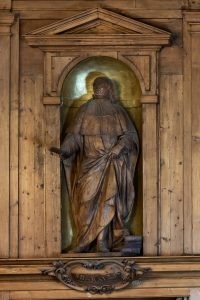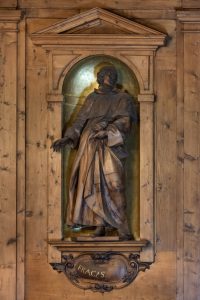Hippocrates (around 460 BC, Coo – around 377 AC, Larissa)
Hippocrates was a Greek physician and aphorist. He is considered the father of medicine for having freed medicine from superstition, giving importance to the study of the human body. Even today, doctors pronounce the “Hippocratic Oath”.
”
Galen (130 BC, Pergamon – around 201 AC, Rome?)
Galen was a Greek physician. He was a reference for Western medicine until the Renaissance. His texts were used in medieval universities. From its name derives the “Galenica”, the art of preparing drugs.
Bartolomeo da Varignana (?, Varignana – around 1321, Genoa)
Bartolomeo was a doctor who performed autopsies in an anatomical theatre. He was a pioneer of forensic medicine and he was also Emperor Henry VII’s personal councilor.
Mondino de’ Liuzzi. (Bologna, 1275 –1326) Mondino de’ Liuzzi was a professor of medicine and anatomy in the Bolognese Studio. He was the first to restore the ancient tradition of the school of Alexandria with the practice of dissecting corpses to deepen the knowledge of the human body. To him we owe the first anatomy handbook.
Pietro d’Argelata. (Argelato, ?- Bologna 1423)
Pietro d’Argelata was a surgeon and lecturer at the University of Bologna. He was very skilled in operating hernias and fractures. At the death of Pope Alexander V in Bologna, he was commissioned to embalm his body, after having performed the autopsy.
Giulio Cesare Aranzio. (Bologna, 1530?-1589)
He was a very well-known physician for the dissections that he practiced at the Anatomical Theatre and for his study on the physiology of childbirth and on the anatomy of the female reproductive system. He was the first to hold the chair of anatomy at the University of Bologna (in 1570).
Costanzo Varolio (Bologna, 1543 – Rome, 1575)
Costanzo Varolio was a student of the anatomist Aranzio. He was professor of surgery in Bologna and then, he moved to Rome to become Gregory VIII’s personal doctor. His fame is linked to the study of cranial nerves, thanks to an innovative method of dissecting the brain, starting from its stem.
Gaspare Tagliacozzi ( 1545-1599, Bologna)
Gaspare Tagliacozzi was one of Aranzio’s students. He was professor of anatomy and he was the first to study plastic surgery according to scientific criteria, in particular rhinoplasty (in fact, he is holding a nose).
Fabrizio Bartoletti. (Bologna, 1587 – Lendinara 1630)
Fabrizio Bartoletti was a doctor, philosopher, professor of logic and then, of surgery and anatomy in the Studio of Bologna. In 1626, he founded an anatomical school in Mantua. To him we owe the discovery of lactose.
Marcello Malpighi. (Crevalcore, 1628 – Rome 1694)
Marcello Malpighi was a doctor, an anatomist and a physiologist. He is considered the father of microscopic observation. He was the first to observe capillaries in animals and to discover the link between arteries and veins, and his observations on the lungs were fundamental too. He also described the anatomy of the silkworm and the development of the chick in his egg.
His violent divergences with Sbaraglia forced him to reluctantly leave the city of Bologna. He ended his days in Rome, where he was at Pope Innocent XII’s service.
Girolamo Sbaraglia (Bologna, 1641-1710)
He was doctor and anatomist of the Bolognese Studio. We can define him as a “Galenic”, that is a traditionalist. He was the antagonist of Marcello Malpighi and, therefore, of his studies of microscopic and comparative anatomy.
The quarrel between the two men was not only an intellectual clash, but there were also episodes of violence between the two families due to disputes over confined properties, which led to the murder of Sbaraglia’s son, by Malpighi’s brother. Sbaraglia in turn, helped by many of his students, destroyed Malpighi’s villa in Corticella.
Carlo Fracassati. (Bologna, XVII sec.- Messina 1672)
Carlo Fracassati was a professor of medicine and surgery, a companion of Malpighi with whom he shared the studies on blood circulation.


